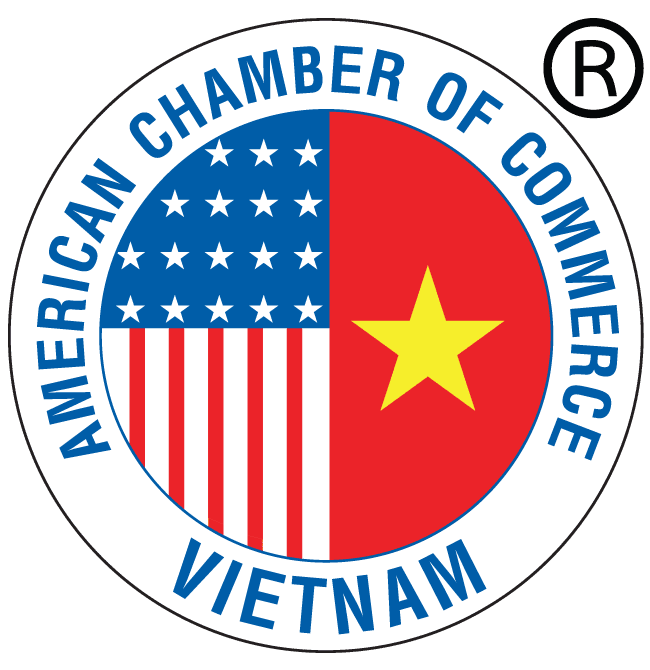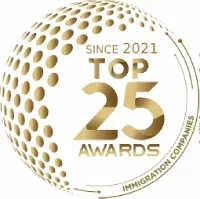- Agriculture & Commodities Industry Practice
- Commercial Manufacturing & Production Industry Group
- Energy Practice Group
- Fashion Industry
- Information Technology
- Logistics & Warehousing Practice
- Retail Practice
- Startup & Emerging Business
- Mobile Application & Social Media
- India Practice Group
- Investors and Entrepreneurs
- Consulting & Service Oriented Businesses
- Visa Franchise Practice
- Mining
- Financial
- Medical Professionals
- Moving from Australia to US
- Emigrate to & from Canada
- Moving from Germany to US
- Grenada Citizenship by investment
- Moving from India to US
- Italian Citizenship & Residency
- Moving from Philippines to US
- Portuguese Residency By Investment
- Moving from Singapore to US
- Moving from Taiwan to US
- Turkish Citizenship
- Moving from United Kingdom to US
- Immigration to the United Kingdom
An ever increasing number of Vietnamese citizens are looking to move abroad, but with
so many citizenship and residency
programs on offer, it can be difficult to navigate the benefits and challenges of
them all. At Davies & Associates we offer
free consultations to determine the best immigration solutions for each client. Our
bespoke solutions go beyond getting our
clients a visa or residency permit. We can help you plan your tax position, help you
set up a business, and provide ongoing
corporate support to that business.
EB-5 Visa: The Fastest Route to a Green Card
Vietnamese citizens have long been wise to the fantastic benefits offered by the United States EB-5 visa. This fast route to a Green Card is open to anyone who can make a significant investment in the United States. The EB-5 visa has proved so popular in China that the country has exceeded an annual quota of EB-5 visas and its citizens face a waiting list of over 10 years. Yet, this may not always be the case, so act fast. D&A has helped many hundreds of people successfully relocate to the USA on the EB-5 program.
E-2 Visa: The Next Best thing to a Green Card
The E-2 Visa allows a family to live and work in the United States for the purposes of owning and operating a business or franchise. The applicant needs to present a strong business case and D&A is able to help our clients draw up an appropriate business plan. The visa offers potential tax benefits, travel flexibility and also allows a spouse to apply to work in the United States. Vietnamese citizens are not currently eligible for the E-2 visa, but D&A was one of the first law firms in the world to help an ineligible client secure an E-2 visa. Book a free consultation with our team to discuss methods of becoming eligible for the E-2 Visa.
D&A is one of only a few law firms in the world that has a proven track record of helping clients from non-E2 countries like Vietnam secure an E-2 Visa
L-1 Visas
The L-1 visa has long been used by companies seeking to move their employees from their offices in Vietnam to their offices in the United States. Fewer people know that you are able to set up a new office in the United States and move yourself or a colleague there for the purposes of running that business. D&A specializes in new-office L1 visas, helping our clients not just get the visa but set up the office and ensure compliance with tax and U.S. corporate law.
Australia
Australia is among the top destinations for Vietman’s emigrants. This is no surprise given that Australia has registered decades of non-stop growth driven by its diverse industrial base and its highly educated, multicultural workforce. Through our partners in Australia we are able to offer support with investor visas, employer-sponsored visas, family visas, and visa for highly skilled workers. Get in touch with our team to discuss your future in Australia.
Grenada Citizenship by Investment
Many Vietnamese residents are keen to acquire a secondary passport, but may not have the funds for the most popular global programs. We are able to explore a range of cost-effective options, such as the Grenada Citizenship by Investment programme. Our attorneys have significant experience of these programs, which offers access to a strong passport without residency requirements or taxation on worldwide income. We are also able to assist with a range of other global citizenship or residency programs, such as Turkey, Cyprus, Portugal, Malta and the UK.
Corporate Work & Tax Structuring
Vietnamese citizens are known for their industrious nature and many of our clients seek to establish a business once they move abroad. D&A offers a suite of corporate and tax services ensuring that our partnerships with our clients last long after they have moved abroad. It is important to structure your existing finances to optimize your tax position and to ensure that your new business is compliant with the regulations in your chosen destination.
FAQs
Comparing EB-5 with Other U.S. Immigration Options
The EB-5 visa is a program designed for foreign investors to obtain U.S. permanent residency with full rights similar to U.S. citizens. It is the simplest and most straightforward legal immigration option for financially capable families, without requiring specialized skills. The EB-5 program is suitable for families planning to immigrate and can wait for about 3 years.
The E-2 visa is a temporary residency visa for citizens of countries with a Treaty of Commerce with the U.S. However, Vietnam currently does not have such a treaty with the U.S. Therefore, Vietnamese investors seeking E-2 visas need to obtain citizenship from a country that has a treaty first. Then, they must invest a "significant" amount in the U.S., at least 3.5 billion VND (150,000 USD). The investment process is simpler than EB-5. The highlight of E-2 is quick visa approval and easy proof of funds.
However, both the intermediary citizenship and investment for an E-2 visa will cost nearly as much as the EB-5 investment. Moreover, E-2 does not grant green cards for the family like EB-5. It is a fast option for children studying in the U.S., but obtaining green cards for the entire family can be quite difficult.
The L-1A visa is a temporary residency visa for high-level business executives transferring personnel to the U.S. To meet the requirements, investors must demonstrate:
- Having a company in Vietnam, and the company is large enough to expand international operations.
- Establishing a subsidiary company in the U.S. and needing to transfer high-level personnel from Vietnam to the U.S.
- When meeting the requirements, the applicant will be granted an L-1A visa to manage the subsidiary company in the U.S. The initial visa is valid for 1 year and can be extended. This program is very challenging, with a success rate of less than 50%.
The EB-1C visa is the next option after the L-1A visa to obtain U.S. permanent residency. After operating a business in the U.S. with an L1-A visa for 1 year and proving the efficient operation of the company, creating jobs, high revenue, etc., and having a need to continue to operate the business permanently, the applicant can submit an EB-1C permanent residency application. Similar to L-1A, this is also a very challenging program.
The EB-3 visa: This program is essentially an employment-based visa for jobs that cannot find local workers in the U.S.
To participate in this program, the following steps are required: The employer posts a job advertisement for foreign workers and proves that local workers cannot be found for the position. The employer needs to demonstrate compliance with U.S. regulations in terms of policies and wages.
If the above requirements are met, the employer will be certified to hire foreign workers. The worker can then apply to be selected. This is a labor visa program for manual jobs such as agriculture, janitorial work, and service industry jobs. However, there have been cases of exploiting this program for U.S. permanent residency without actually working. The U.S. government has discovered and restricted the issuance of visas for EB-3 applications. Currently, this program has been temporarily suspended until the end of 2020.
In summary, currently, the stable and convenient choice for obtaining a green card is still the EB-5 visa.
Source of Investment Funds
Yes, it is possible. In the EB-5 program, the investor is required to invest a specific amount of money into an economic project or business that creates jobs for U.S. citizens.
This investment amount is usually $1.8 million (or $900,000 if the project is located in a targeted employment area).
If the investor already has assets in the U.S., they can use this money to meet the EB-5 investment requirement.
Yes, it is possible. In the EB-5 program, the primary investor (principal applicant) can transfer the investment capital to their spouse or child through a derivative petition.
The recipients of the derivative petition will enjoy similar benefits as the primary investor, including the Green Card benefits.
Yes, it is possible, but it must comply with the regulations and requirements of the EB-5 program. When the investor completes the EB-5 investment from the initial project, they can use this money to invest in another EB-5 project, as long as the investment amount still meets the minimum investment requirement of the program.
Davies & Associates plays a crucial role in supporting investors in protecting their investment capital and ensuring capital return in the EB-5 program. Davies & Associates often selects projects with potential and ensures that the investor's investment is used efficiently and safely.
Davies & Associates also ensures that the project meets the requirements of the EB-5 program and conducts necessary legal procedures to protect the investor's rights and interests.
To transfer investment funds into an EB-5 project safely for the application, investors need to comply with the regulations and transfer procedures set by the EB-5 program and the investment project.
Specific steps may include using reputable channels for fund transfers, monitoring and tracking the funds to ensure they are used for the intended investment purpose, and keeping complete and accurate evidence of the fund transfers for the application submission.
Visa Quota
Changing nationality cannot avoid the visa quota for Vietnam in the U.S. The visa quota is determined by U.S. immigration laws and applies to each country.
If a country has reached its visa quota, new visa applications from that country may face restrictions or longer waiting times. Changing nationality does not affect the visa quota of that country in the U.S. immigration program.
Investment Visa Risks
The biggest risks in the EB-5 investment immigration program are:
- Choosing a regional center (the entity that mobilizes and manages EB-5 funds from investors) with no experience in implementing EB-5 projects or lacking knowledge and experience in assessing and selecting qualified and feasible projects.
- The project not meeting the job creation requirements as required by the U.S. Immigration authorities, or the project using the investment capital for improper purposes.
- The investor's source of investment funds cannot be sufficiently demonstrated as required by U.S. Immigration authorities.
Another risk lies in investors choosing lawyers or immigration firms with no experience in proving the source of funds. This is a mandatory and prerequisite requirement apart from the project to ensure the success of the application.
To ensure a safe EB-5 investment, investors need to consider the following three decisive factors:
- Regional Center: Investors should choose a regional center with established experience and reputation in various projects. Key figures such as approval rate, ability to recover funds, etc., can help assess the quality of the regional center.
- Importantly, the regional center must provide statistical data from the government on unemployment rate, population, etc., to demonstrate the TEA (Targeted Employment Area) qualification of the project.
- Immigration Lawyer: Investors need to select an immigration lawyer specialized in handling EB-5 applications and having abundant experience in the EB-5 investment field. The lawyer needs to have deep knowledge and experience in handling various cases such as providing supplementary evidence, filing appeals, etc.
In particular, they should be an independent lawyer (not affiliated with the project) to ensure no conflict of interest and to guarantee the highest protection of the investor's rights. They can also represent the client in recovering the investment funds if the legal aspects of the project are unclear and not transparent.
Immigration Advisory Firm: Investors should choose an immigration advisory firm with established experience and reputation over the years.
The approval rate and transparency, along with dedication, are essential factors.
The immigration advisory firm, together with the lawyer, must have sufficient knowledge and experience in examining and evaluating legal documents, proving the source of funds, and other aspects of the project to ensure the success of the application and the safety of the investor's capital.
Conditions for Targeted Employment Area (TEA) Designation
After the new regulations of the EB-5 program were implemented in November 2019, apart from the increased investment amount, there were also notable changes in the conditions for TEA designation.
Previously, projects would often receive TEA approval letters from city authorities to confirm their qualification for TEA status. However, under the new law, city authorities are no longer allowed to issue TEA certifications for projects. The designation of a project as a TEA can only be determined after the investor's application has been submitted to the U.S. Citizenship and Immigration Services (USCIS).
As a result, TEA approval letters issued before the current time are no longer valid. Regardless of when they were issued, any TEA approval letters issued after November 21 are no longer recognized. All projects must comply with the new regulations.
Vì vậy, giấy phép TEA mà các dự án giới thiệu trước thời điểm hiện tại không còn có hiệu lực nữa.
To determine if a project qualifies for TEA status, the following criteria may be considered:
- Unemployment Rate in the Area: The project must be located in a rural area or an area with a high unemployment rate.
- Calculation of Project Coordinates: Previously, a project could use multi-sided geographic boundaries to calculate the unemployment rate. However, under the new law, a project can only use single-sided geographic boundaries.
For instance, in the past, a project located in the center of District 1 could consider the unemployment rates from nearby areas such as District 4, District 2, District 3, etc., and still qualify for TEA status. But under the new law, the project in District 1 can only consider the unemployment rate in the immediate vicinity of the project, which is limited to District 1 only.
To ensure a successful EB-5 application and the safety of your investment, investors should choose projects managed by reputable regional centers. The regional centers must have experience and a deep understanding of the law to correctly determine the TEA eligibility of a project.
Furthermore, investors should seek support from experienced professionals and legal advisors who can identify projects that meet the TEA criteria and have a higher chance of approval.
Dependents
Yes, for the EB-5 immigrant investor program, the applicant has the right to add the spouse and children to the application at any time during the processing of the petition.
However, the applicant needs to provide additional documents such as marriage certificates for verification.
Even though the child's age is locked at 20 years old, once the I-526 petition is filed with the U.S. Immigration Services, the period from the approval of I-526 to the receipt of the application from the National Visa Center (NVC) will be added to the child's initial age.
This period usually takes 3-6 months, but it can be extended to several years if the number of applications from a country, such as Vietnam, exceeds the annual EB-5 visa quota for that country.
In this case, the age of the child on the petition may reach 21 years old, and thus, they will no longer be able to accompany the EB-5 visa application.
To assess the level of safety for a child accompanying the application, the investor should contact Davies & Associates for detailed advice.
The investor should choose the option where the child sponsors the parents in the EB-5 investment. This option is easier and faster.
In the case where parents sponsor an adult child, often along with their spouse and children, the process will be more complex and time-consuming.
There is no impact. The investor can still submit an EB-5 application even if the investor, spouse, or children had previously been denied tourist, family-based, or student visas.
However, the investor needs to adhere to the following conditions:
- Not exceeding the visa's allowed time.
- Providing truthful information during the preparation of the application.
- Not violating any laws while in the U.S. under a nonimmigrant visa status.
During the application preparation process, the investor should disclose all relevant information regarding their criminal background, health condition, travel history, and immigration history to Davies & Associates, the attorneys, and the project for pre-application advice.
The Main Applicant
Yes, there's no problem with that. This is a quite common case, and many families have chosen this approach.
According to the law, only individuals over the age of 21 can be the principal applicant in the EB-5 program. However, there is a provision that allows individuals under the age of majority to be the principal applicant. This process may be a bit more complicated but can still be approved.
The amount of money gifted from the parents needs to be properly documented by the parents to allow the child to be the principal applicant.
After Receiving the Visa/Green Card
After receiving the immigrant visa, the visa for the investor and accompanying family is typically valid for about 6 months from the date of completing the medical examination.
For example, if the medical examination is completed one day before the visa interview, then the investor's visa will be valid for about 6 months. The family needs to plan to arrive in the US before the visa expires to activate the visa and receive the green card.
Approximately 3 weeks to 1 month after arriving in the US and receiving the visa, the green card for the family will be sent to the attorney's office or directly to the family.
Under the US Constitution, when someone has a US green card, they have the right to reside anywhere within the US territory. Therefore, after coming to the US, the investor does not need to live in the vicinity of the project. This is different from the L-1A visa, which requires high-level executives of the company to be near the company's location for operation and management.
The US does not have specific requirements for the time of residency after obtaining a green card. However, the law stipulates that the investor must show the intention to live in the US and maintain permanent residency status. This can be demonstrated by having a home in the US, having a business in the US, having children studying in the US, etc.
Furthermore, immigration experts recommend that the investor and family should not be absent from the US for more than 6 months in a year. If they stay outside the US for too long (more than 6 months), upon re-entry, they may be scrutinized by border officials at the airport. If they suspect that the investor does not intend to maintain permanent residency, they may refer the case to court for further investigation. From there, the investor may lose their green card.
If it is not possible to maintain such time and there is a need to travel frequently between the US and Vietnam, the investor should apply for a Re-entry Permit before leaving the US. This permit is valid for up to 2 years from the first issuance and allows the investor to be absent from the US for up to 2 years with a legitimate reason for the absence.
However, subsequent applications for re-entry permits after this period can only be extended for a maximum of 1 year.
Currently, Vietnam does not have a double taxation avoidance agreement with the US. Therefore, after coming to the US as a permanent resident, the investor is obligated to declare and pay taxes on all income both inside and outside the US. US Citizenship
The process of obtaining US citizenship includes 10 steps as follows:
Step 1: Determine if the applicant is already a US citizen.
Step 2: Check if the applicant meets the requirements for applying for US citizenship.
Step 3: Prepare Form N-400, the application for naturalization.
Step 4: Submit Form N-400, relevant documents, and processing fees to the US Citizenship and Immigration Services (USCIS).
Step 5: Attend the biometrics appointment (fingerprinting).
Step 6: Participate in the naturalization interview: During the interview, the applicant will be asked questions by USCIS officers about Form N-400, take the naturalization test, and have their English language proficiency tested.
- Naturalization Test: It consists of 100 questions related to US history and government. During the naturalization interview, the applicant will be asked up to 10 questions from the list of 100 questions. To pass this test, the applicant needs to answer at least 6 out of 10 questions correctly.
- English Language Test: The applicant must demonstrate the ability to speak, read, and write in English during the interview.
Step 7: Receive the decision on the naturalization application from USCIS.
If the application is denied, USCIS will provide a clear reason for the decision. If the applicant disagrees with the decision, they can file Form N-336 to request USCIS to review the decision within 30 days from the date of denial.
Step 8: If the application is approved, the applicant will be notified of the date to attend the naturalization ceremony and take the Oath of Allegiance.
Step 9: Attend the naturalization ceremony and officially become a US citizen.
Step 10: Understand and abide by the rights and responsibilities of being a US citizen.
Request For Evidence (RFE) & Notice of Intent to Deny (NOID) in the EB-5 Process
During the process of reviewing an EB-5 investor's application, the U.S. Citizenship and Immigration Services (USCIS) may request clarifications or additional evidence for the application. In case additional evidence is needed, USCIS will issue a Request For Evidence (RFE) or a Notice of Intent to Deny (NOID).
RFE/NOID can occur at any stage of the EB-5 application process, including the I-526 petition stage, National Visa Center (NVC) interview preparation stage, I-829 permanent resident application stage, and even the I-131 re-entry permit application stage.
However, the likelihood of USCIS issuing RFE/NOID is highest during the I-526 petition stage, which is also the longest processing stage (currently over 40 months) for an EB-5 application.
RFE and NOID differ in the level of severity of USCIS requesting additional information/evidence to address the issues of concern in the application. When USCIS issues a NOID, it means the investor has only one chance to present and respond to the unresolved issues in the submitted application.
However, there are cases where USCIS may deny the application without issuing an NOID
Not necessarily. If the response to the NOID satisfies the requirements specified in the NOID and is submitted within the given deadline, the application can still be approved.
Receiving RFE/NOID signals that the investor's application has been reviewed and is in the final stages of adjudication, just before a decision is made. In other words, receiving RFE/NOID also means that the application is close to receiving a decision.
However, RFE/NOID also indicates that certain aspects of the application need clarification or additional evidence, documents, explanations, etc., as USCIS believes that these points have not been adequately addressed or proven. This is a critical time that determines the success or failure of the EB-5 application.
Investors must ensure to complete their response to the RFE/NOID, along with convincing evidence, before the specified deadline in the RFE/NOID. Typically, this deadline is 90 days.
NOID Duration
No, after the deadline stated in the RFE/NOID, if the investor cannot complete the response on time, the application will be denied.
RFE/NOID will address all the issues that USCIS needs the investor to clarify, explain, and provide additional evidence in the submitted application.
RFE/NOID may be related to the chosen EB-5 project, including the project's business plan, job creation model, legal documentation of the project, capital structure, loan structure, etc.
RFE/NOID may also be related to the investor's personal information, including discrepancies between the information provided in the application form and the information in the submitted documents (name, date of birth, place of birth, place of residence, etc.).
Furthermore, RFE/NOID may involve proving the lawful source of the investor's funds, including improper accumulation of funds or lack of sufficient documentation for asset liquidation and fund transfer for investment.
- It is crucial to complete the response to RFE/NOID on time. Even if the application is fully supplemented, if the deadline is not adhered to, the response will not be considered, and the application will be denied. Therefore, investors must ensure strict compliance with the deadline and cannot request an extension.
- Before requesting additional information/evidence or denying the application, USCIS conducts a detailed analysis of the points of concern in each type of submitted documents. Inconsistent, unclear, unconvincing, or unreasonable explanations are closely examined. Additionally, USCIS provides preliminary assessments and conclusions regarding the persuasiveness and legality of the application based on clearly defined immigration regulations.
- Investors need to review all the previously submitted documents listed in the RFE/NOID to reevaluate the persuasiveness of the documents and explanations submitted before.
- The request for additional evidence from USCIS is the most critical part of analyzing RFE/NOID, preparing for a comprehensive and persuasive response. However, this request is often presented in a general manner and is not limited to specific types of documents or information that the investor needs to provide.
Investors need to pay attention to the following points to understand the requirements of RFE/NOID and prepare for an effective response:
Strictly adhere to the deadline for completing the response to RFE/NOID, including establishing a clear timeline for preparation and providing documents as requested by USCIS.
Analyze each request for additional evidence from USCIS in detail, evaluate the persuasiveness of the explanations and previously submitted documents.
Prepare a complete and persuasive set of documents and explanations that adhere to each request from USCIS, without fabricating documents or providing false information.
Organize and present the documents clearly, in detail, and thoroughly corresponding to each item and each request from USCIS.
An effective strategy for responding to RFE/NOID will help ensure the success of the EB-5 application.
Contact Davies & Associates Offices in Vietnam
Check all of our locations around the world.
Company location
Vietnam Office
46th Floor, Bitexco Financial Tower, 2 Hai Trieu, Ben Nghe Ward, District 1, Ho Chi Minh City, Vietnam
Map and Driving Directions
Hanoi Office
29th Floor East Tower, Hanoi Lotte Center, 54 Lieu Giai St., Cong Vi Ward, Ba Dinh District, Hanoi, Hà Nội 100000
Map and Driving Directions
"After finding D&A through an internet search in 2020, my wife and I had several free consultations with David Cantor. Despite our initial attempt at filing for our E2 visa independently ending in failure, we decided to hire D&A for their expertise and support. Over the course of four long years, Verdie and Cristina were incredibly patient as we took our time to prepare for the E2 submission. Verdie became our E2 Attorney in 2021, and from the start, Verdie and Cristina's patience was evident. Despite our intermittent engagement over the years, they always treated us with the utmost attention. Working with Verdie and the D&A team was a pleasure; their professionalism and support were unwavering. Verdie's calm demeanor and succinct communication style made navigating the process much smoother, even during complex discussions. I wholeheartedly recommend Verdie and D&A - Davies & Associates, to anyone seeking an immigration law firm who can efficiently handle their case with precision and without unnecessary fanfare. Their ability to get things done speaks volumes about their dedication to their clients' success."
I had the pleasure of working with Verdie and Nessa to obtain my E2 Visa. Their in-depth knowledge and experience allowed me to be fully prepared in my application and they were able to answer all questions leading up to the Visa interview.
Verdie was an amazing attorney, providing exceptional client care throughout the process. He had a great depth of knowledge in all areas on business visas in the US.
I had a great experience with Davies & Associates. They are very thorough in the approach and their have experts in this field who know the domain very well.I would certainly be leaning onto them for any future needs as well.
Outstanding Immigration Attorney: Highly Recommended! Rating: ⭐️⭐️⭐️⭐️⭐️ (5/5) I had the pleasure of working with Verdie Atienza and his team at Davies & Associates , a top-notch immigration attorney in the United States. Their professionalism, expertise, and dedication throughout the process were exceptional. With in-depth knowledge of immigration law, they provided accurate advice and addressed all my concerns, instilling confidence. Verdie Atienza and his team meticulously reviewed my documentation and maintained excellent communication, keeping me updated regularly. What sets Davies & Associates apart is their unparalleled attention to detail. Communication with Verdie Atienza and his team in USA and Sukanya Raman in India was always prompt and efficient. They promptly returned my calls and emails, providing regular updates on the progress of my case. This level of responsiveness and transparency significantly reduced my stress levels, as I knew I could rely on their support and guidance throughout the entire process. Their personalized approach, ethical conduct, and genuine care for my success made them an outstanding attorney. I highly recommend Davies & Associates for all your immigration needs.
Looking for IMMIGRATION ATTORNEYS FOR US VISA IN Vietnam?
We are known for our creative solutions that obtain "impossible" visas, we solve the most complex immigration problems for businesses, investors, individuals, and families.
IMMIGRATION ATTORNEYS FOR US VISA IN Vietnam Immigration lawyer near meSeveral lawyers told me I would not be able to get a TN visa. Two weeks after contacting Davies & Associates I was working in New York, visa in hand.
Individual seeking 'Impossible' TN VisaD&A was very detail-oriented and was very thorough in what they did” L1 Visa Client. There was a lot of work on my case and worked on it 24/7 and was very patient answering all my questions.
E2 Visa ClientMy case felt complex but D&A managed the whole process carefully and helped me move seamlessly from one stage to the next.
E2 + CBI ClientD&A was my guiding light through the entire EB5 Process.
EB5 Visa ClientI would definitely be a big advocate for the rest of my life for anyone wanting to explore the Grenada Citizenship by Investment Programme leading to the E2 Visa. The most important thing is a good team behind you.. with Davies & Associates you’re in safe hands… you need someone who can give you all the support at the ground level and, again, you are well take care of by D&A. The people are really warm, very helpful and quite openminded when it comes to business… Not to mention as a passport it’s great from a travel perspective…It’s just 4/5 hours from New York.
Grenada CBI + E2 Visa ClientThe entire process of getting an EB5 visa is handled in a professional way by Mark Davies and his team. EB5 is a wonderful option for anyone considering moving to the United States if you have the means. I was hoping to use the H1B route for my children, but it became unreliable and so I looked to the EB5 Visa instead. It is great for anyone who has the resources. Mark gives you the first meetings himself which gives you great comfort. Both Mark and Sanjay are abundantly available and I even had the pleasure of hosting them at my house.
Parent of 2 EB5 Visa HoldersI'm in a process of extending my L1 visa. I submitted a few questions regarding my case and he contacted me back almost immediately both by e-mail and telephone. Unlike other attorneys I met before, he gave me the impression of knowing from the top of his head what kind of visa I have, and what actions had to be taken to extend it. He is very thorough and clear regarding the process and what to expect in terms of timelines and issues that may arise. He is constantly in contact, so you definitely know he's working on your case.
L1B Visa HolderMark Davies is a joy to work with. His extensive knowledge, speedy response and attentive service took away all my fears of dealing with immigration and visa applications. He is very generous with his time in explaining every step along the way and I have already and will in the future recommend him to anybody who is looking for an immigration lawyer.
E2 Visa for Small Professional Business With International OfficesDavies & Associates assisted us with an immigration emergency involving my brother's fiancée who was outside the United States. They assisted us in an highly professional manner, working with the relevant US embassy, US immigration and the governments of two other countries. As a result of their efforts the individual involved is now working in the United States. While their knowledge of the law is exemplary what really distinguishes this firm and attorney Davies from any other firm we have worked with is their dedication to customer service and their unrivaled level of professionalism.
Complex Fiancée Visa Need Involving Multiple International JurisdictionsSeveral lawyers told me I would not be able to get a TN visa. Two weeks after contacting Davies & Associates I was working in New York, visa in hand. I have recommended this firm to several friends and colleagues, they do an excellent job every time.
Individual Seeking 'Impossible' TN VisaI was qualified as a physician in a foreign country. Being on a J1 visa I was facing having to leave the United States and return to my home country. Davies & Associates secured one of only 30 J1 visa waivers available in my State, allowing me to work for a US hospital and remain in the United States.
Doctor Seeking J1 Visa WaiverI am very satisfied with the services Mark Davies has provided me. He has a very extensive knowledge in immigration laws and has a thorough approach to any case.
U Visa Applicant, A Victim of CrimeLooking to relocate or having trouble with a visa applicaton?
We are known for our creative solutions that obtain "impossible" visas, we solve the most complex immigration problems for business, investors, individuals and families.
Request Free Consultation





 Vietnamese
Vietnamese
